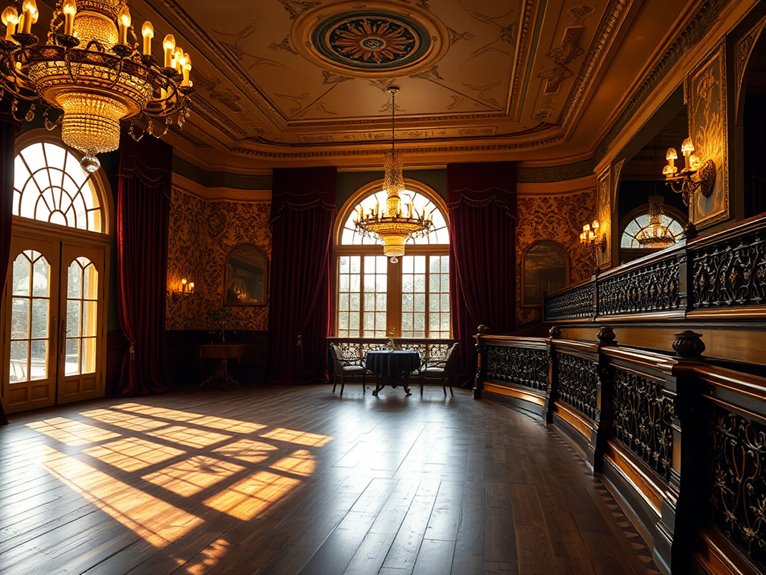
6 Historic Dance Clubs in Paris With Authentic Atmosphere
I've discovered six must-visit historic dance clubs in Paris that'll transport you back in time! Le Petit Journal (1948) remains a cozy jazz haven, while La Bellevilloise (1877) evolved from a workers' co-op into a cultural hotspot. Don't miss Bus Palladium's rock legacy, La Boule Noire's Montmartre charm, Les Caves Saint-Germain's Left Bank beats, or La Java's Art Deco splendor. Each venue holds fascinating secrets within their storied walls, waiting to be explored!
Le Petit Journal: Jazz Haven Since 1948
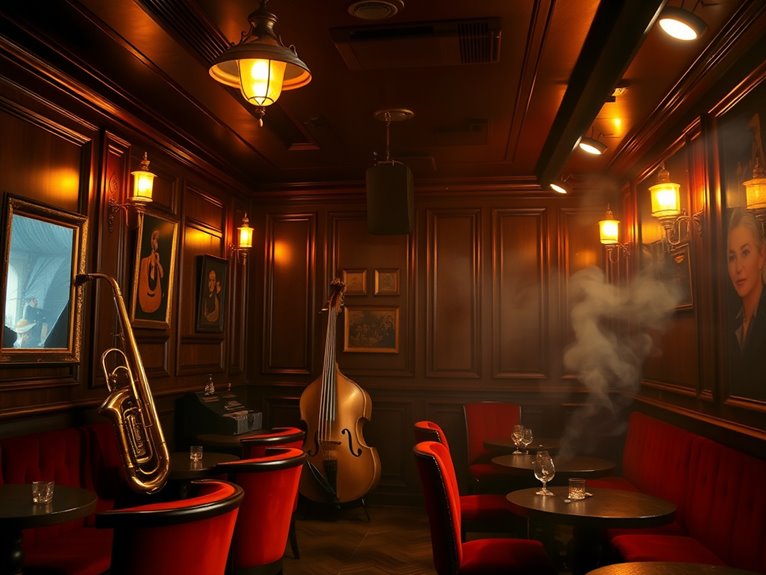
Since opening its doors in post-war Paris, Le Petit Journal has stood as one of the city's most influential jazz institutions, hosting legendary performers like Chet Baker, Stan Getz, and countless French jazz pioneers. This historic venue, nestled in the heart of Saint-Germain-des-Prés, represents the golden age of Parisian jazz culture and continues to showcase world-class talents nightly.
The club's intimate atmosphere, with its signature red velvet curtains and vintage photographs adorning exposed brick walls, transports visitors to an era when Paris was the European capital of jazz. Modern audiences can experience the same magical ambiance that attracted cultural icons like Boris Vian and Jean-Paul Sartre while enjoying contemporary jazz performances of the highest quality.
Quick Facts:
- Operating Hours: Tuesday-Saturday, 8:30 PM – 2 AM
- Cover Charge: €25-35 (includes first drink)
- Dinner Service: Available from 7:30 PM (reservations recommended)
- Dress Code: Smart casual
- Live Sets: Two performances nightly (9:30 PM and 11:00 PM)
- Capacity: 120 seated guests
- Photography: Permitted without flash during breaks only
The Main Room features the original stage where countless jazz legends have performed, with carefully arranged seating that guarantees excellent sightlines from every table. The acoustics, refined over decades, create an exceptional environment for both intimate trio performances and full ensemble shows. The venue's location at 71 Boulevard Saint-Germain places it within walking distance of several metro stations, making it easily accessible for both tourists and locals.
The Underground Bar, a lesser-known space beneath the main performance area, opens at 7:00 PM for pre-show drinks and light meals. This cozy space often hosts impromptu jam sessions during set breaks, providing an authentic jazz club experience where established musicians mingle with emerging talents.
Pro Tips:
The best experience comes from booking a table in the center section, roughly 15-20 feet from the stage, where the sound balance is ideal and you can observe both the performers and the historic room's ambiance. For the full experience, arrive early enough to enjoy dinner before the first set – the kitchen's jazz-inspired French cuisine has earned its own following among regular patrons.
Practical Advice:
Advance reservations are essential, particularly for weekend performances and special events. Book at least two weeks ahead for prime seating, and consider the dinner-and-show package for the best value. While credit cards are accepted, having cash on hand for drinks and tips is recommended. The venue's strict no-talking policy during performances preserves the listening experience, so plan conversations for set breaks.
La Bellevilloise: From Workers' Co-op to Cultural Icon

Nestled in Paris's vibrant 20th arrondissement, La Bellevilloise stands as a reflection of the city's rich cultural and political history. Originally established in 1877 as France's first workers' cooperative, this historic venue has evolved from a revolutionary meeting place into one of Paris's most dynamic cultural centers, hosting everything from jazz concerts to art exhibitions.
Today's La Bellevilloise maintains its spirit of community and artistic expression while adapting to contemporary cultural needs. The three-story building combines industrial architecture with modern amenities, creating a unique space where history meets present-day creativity through music, arts, gastronomy, and social gatherings.
Quick Facts:
- Opening Hours: Tuesday-Sunday, 10:00-02:00
- Price Range: €10-30 for events; €20-40 for brunch
- Best Times to Visit: Thursday evenings for jazz, Sunday for famous brunch
- Reservation Requirements: Essential for brunch, recommended for events
- Accessibility: Metro lines 3 and 11 (Ménilmontant station)
- Photography: Allowed in common areas; restricted during performances
Main Spaces:
Le Loft
A vast, light-filled space featuring exposed brick walls and industrial windows, Le Loft hosts exhibitions, concerts, and the famous Sunday jazz brunch. The 400-square-meter area accommodates up to 400 people and provides stunning views over Belleville. Insider tip: Request a window table during brunch for the best city views.
Le Club
The intimate basement venue captures the spirit of 1930s Paris with its art deco details and warm lighting. Regular jazz performances and DJ sets make this space especially popular on weekend nights. The stone vaulted ceiling creates exceptional acoustics rarely found in modern venues.
La Terrasse
The rooftop terrace offers a green oasis above the bustling city streets. Open during warmer months, it serves as a perfect spot for afternoon drinks or evening performances. Secret tip: Arrive just before sunset on Thursdays for incredible photo opportunities and smaller crowds.
Pro Tips:
For the best experience at La Bellevilloise, time your visit according to your interests. The Sunday jazz brunch tends to be crowded between 12:00-14:00, so opt for either the earliest (11:00) or latest (15:00) seating. For evening events, arriving 30 minutes before the posted start time ensures good seating while allowing time to soak in the atmosphere and perhaps enjoy a pre-show drink at the bar.
Practical Advice:
Book tickets for special events well in advance through the venue's website, as popular shows often sell out quickly. Consider joining their membership program for priority booking and discounts. The neighborhood can be quiet at night, so pre-book a taxi or ride-share service for late-night departures. The venue's multiple levels may challenge those with mobility issues, though staff are accommodating when possible.
Bus Palladium: Rock & Roll's Parisian Home
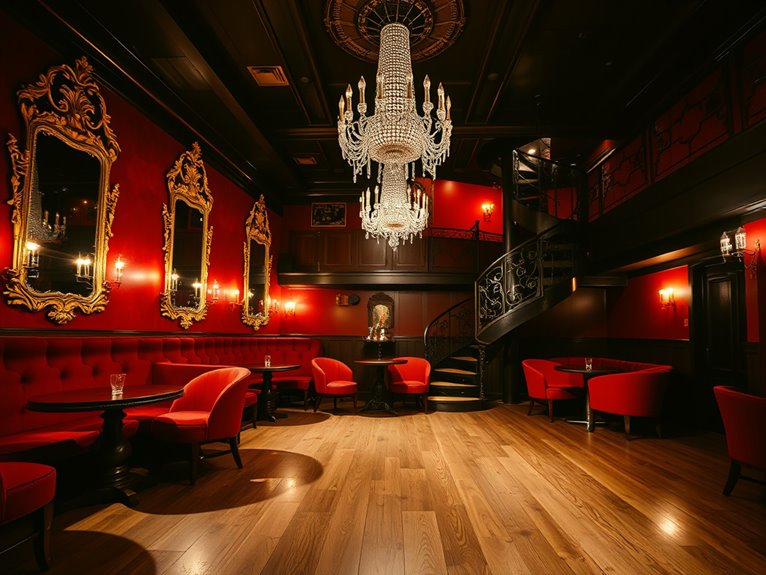
Since its opening in 1965, Bus Palladium has been the beating heart of Paris's rock and roll scene, hosting legendary performances and serving as a creative nexus for musicians, artists, and night owls. This historic venue in the 9th arrondissement earned its reputation as the French capital's answer to New York's CBGB, welcoming both established stars and emerging talents through its doors.
The three-story club has witnessed performances by rock royalty including The Who, Prince, and countless French rock pioneers, while maintaining its authentic spirit and raw energy. Its distinctive mix of live music, late-night dancing, and artistic freedom has made it an essential stop for music lovers seeking to experience Paris's rock heritage firsthand.
Quick Facts:
- Opening Hours: 11:30 PM – 6:00 AM (Wednesday to Saturday)
- Cover Charge: €10-20 (depending on events)
- Live Music: Usually starts at midnight
- Dress Code: Rock-casual, no athletic wear
- Capacity: 600 people
- Age Requirement: 18+
- Payment Methods: Cash and cards accepted
- Reservation recommended for special events
Main Dance Floor
Located on the ground level, the main dance floor features the original stage where countless rock legends have performed. The space maintains its 1960s aesthetic with vintage decorations and the iconic red velvet curtains. The superior sound system handles both live performances and DJ sets with equal precision.
The Gallery
The mezzanine level, known as The Gallery, offers a more intimate atmosphere with its own bar and lounge areas. Historic rock photography lines the walls, documenting the venue's impressive musical legacy. This space provides perfect viewing angles for stage performances below.
The Cave
The basement level, dubbed The Cave, represents the grittier side of Bus Palladium's personality. With exposed stone walls and low ceilings, this space hosts underground DJ sets and emerging artists. It's where many French rock bands got their start and continues to nurture new talent.
Pro Tips:
Arrive before midnight to avoid the longest queues and secure a good spot near the stage. The venue's busiest nights are typically Fridays and Saturdays, while Wednesdays and Thursdays offer a more local experience with easier access to the bar and dance floor. For the best sound quality, position yourself near the middle of the main room, where the acoustics are perfectly balanced.
Practical Advice:
Located at 6 Rue Pierre Fontaine, Bus Palladium is easily accessible via Metro stations Blanche or Pigalle. While the neighborhood is safe, it's best to book a taxi or ride-share for late-night departures. Consider joining their social media channels for last-minute announcements about surprise performances and special events, which happen frequently but are often only promoted day-of.
La Boule Noire: Montmartre's Musical Time Capsule
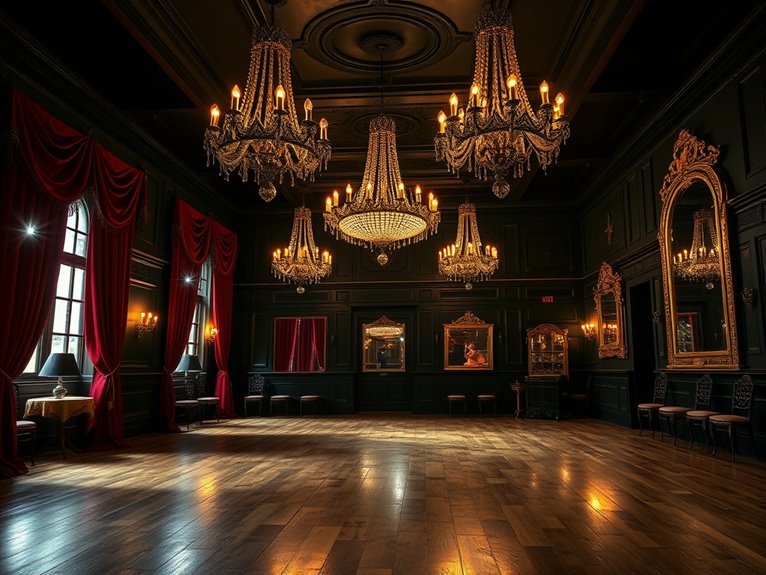
Nestled in the heart of Montmartre, La Boule Noire stands as one of Paris's most enduring music venues, having hosted legendary performances since its establishment in 1822. Originally a guinguette (a traditional French dance hall), this historic venue has evolved through various musical eras while maintaining its intimate atmosphere and authentic charm that has attracted both local talents and international artists.
This iconic club represents a crucial piece of Paris's musical heritage, serving as a bridge between the classic chanson française era and contemporary independent music scenes. Its black-painted facade and vintage interior transport visitors to a bygone era while showcasing cutting-edge performances, making it an indispensable destination for music enthusiasts seeking to experience Paris's rich cultural tapestry.
Quick Facts:
- Operating Hours: Tuesday-Saturday, 7:30 PM – 2:00 AM
- Capacity: 200 people
- Average Ticket Prices: €15-30
- Photography Policy: Allowed without flash
- Age Restriction: 18+
- Dress Code: Smart casual
- Reservation recommended for popular shows
- Metro Access: Line 2 (Anvers) or Line 12 (Pigalle)
Venue Features:
The main concert hall preserves its original 19th-century architectural elements, including ornate moldings and a stunning balcony, while housing state-of-the-art sound equipment. The intimate setting guarantees excellent acoustics and unobstructed views from virtually any position. The venue's bar serves classic French wines and craft cocktails, with prices ranging from €6-12.
Programming:
La Boule Noire maintains a diverse musical calendar, featuring indie rock, electronic, jazz, and world music performances. The venue is particularly known for spotlighting emerging artists before they achieve mainstream success. Lesser-known fact: The club hosts secret shows by established artists under pseudonyms, announced only to their mailing list subscribers.
Pro Tips:
For the best experience, arrive at least 30 minutes before show time to secure a prime viewing spot near the stage's left side, where the acoustics are ideal. The venue's temperature can rise considerably during packed shows, so dress in layers and avoid heavy coats during winter months. The small bar area can get crowded, so consider ordering drinks during set breaks rather than between acts.
Practical Advice:
Book tickets online through the venue's official website to avoid disappointment, as shows frequently sell out. Consider combining your visit with dinner at nearby restaurants in Montmartre, as the venue's food options are limited. Street parking is challenging, so public transportation is highly recommended. For those interested in the venue's history, arrive early and ask the staff about the guided mini-tour they occasionally offer before shows begin.
Les Caves Saint-Germain: Underground Beat of the Left Bank
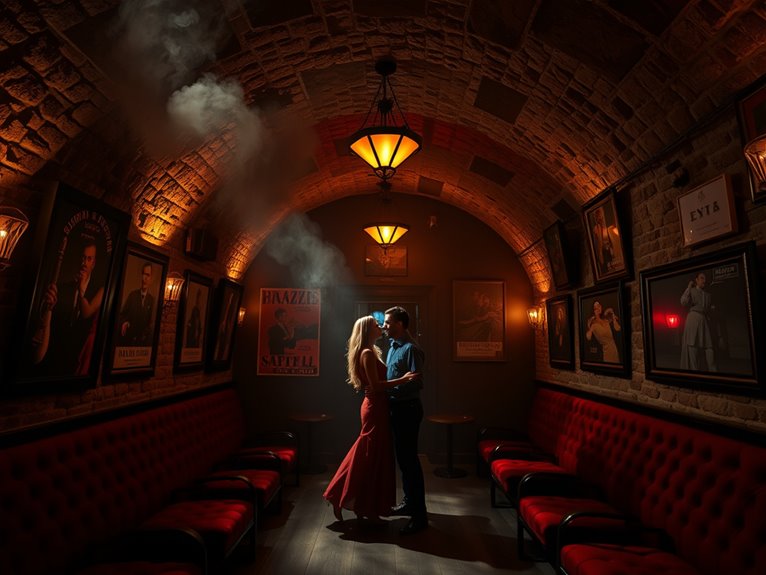
Nestled beneath the cobblestone streets of Paris's intellectual quarter, Les Caves Saint-Germain emerged as a cornerstone of Parisian nightlife during the post-war era. This legendary underground club, established in 1948, became the pulsing heart of jazz and existentialist culture, where luminaries like Boris Vian and Miles Davis would perform while Jean-Paul Sartre and Simone de Beauvoir engaged in philosophical debates at corner tables.
The venue's dark, vaulted cellars transformed from wine storage to a cultural nucleus that defined the Beat Generation's Parisian experience. Its magnetic draw pulled artists, writers, and musicians from across the globe, creating an unprecedented fusion of American jazz, French chanson, and avant-garde experimentation that would influence nightlife culture for decades to come.
Quick Facts:
- Opening Hours: 11 PM – 6 AM (historic operating hours)
- Former Location: 7 Rue Saint-Benoit, 6th arrondissement
- Capacity: Approximately 200 people
- Music Style: Jazz, Blues, Early Rock 'n' Roll
- Dress Code: Bohemian-chic (historical)
- Notable Period: 1948-1963
- Current Status: Closed, but building remains as historical site
The Main Cave
The primary performance space featured low, curved ceilings with exceptional acoustics, creating an intimate atmosphere where music resonated perfectly off the stone walls. The room's layout, with its scattered tables and central dance floor, encouraged spontaneous collaborations between musicians and audience interaction. The original bar remains intact, though the space now serves as a restaurant.
The Jazz Corner
A smaller alcove known as "Le Coin Jazz" became famous for impromptu jam sessions where unknown musicians could play alongside established artists. This space, with its exquisite acoustics and cozy dimensions, hosted early performances by future jazz legends like Sidney Bechet and Django Reinhardt.
The Writers' Nook
A secluded area nicknamed "Le Coin des Écrivains" served as a makeshift literary salon where the era's greatest minds would gather. This spot, marked by a distinctive arch and original stone walls, witnessed the birth of numerous literary movements and philosophical debates.
Pro Tips:
While Les Caves Saint-Germain no longer operates as a club, the spirit of the era lives on in nearby establishments. Visit during off-peak hours (Tuesday-Thursday evenings) to experience similar contemporary venues in the area with minimal crowds. The best time to explore the historical facade and take photographs is during early morning hours when the streets are quiet and the lighting is ideal for capturing the building's architectural details.
Practical Advice:
Today's visitors can participate in guided literary walks that include the exterior of Les Caves Saint-Germain as a stop. Book these tours through official Paris tourism offices or reputable historical tour companies. While the original club space is not open to the public, several nearby cafes and jazz clubs maintain the authentic ambiance of the era. Consider visiting Le Petit Journal Saint-Germain or Le Caveau de la Huchette for a similar historical jazz club experience.
La Java: Art Deco Dance Hall of the Roaring Twenties
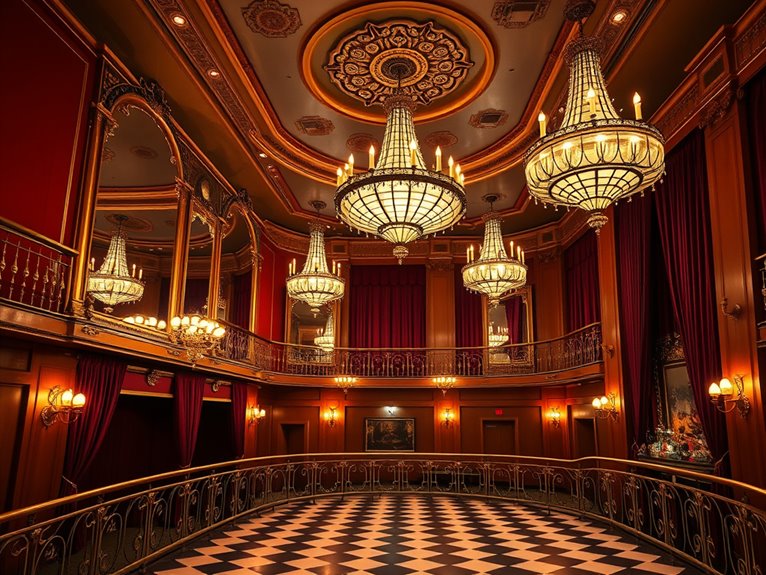
Nestled in the vibrant Belleville neighborhood, La Java stands as a living symbol of Paris's golden age of dance halls, having welcomed revelers since 1924. This iconic establishment, with its distinctive Art Deco architecture and rich historical significance, represents one of the few remaining authentic dance halls from the Roaring Twenties era, where legendary performers like Django Reinhardt and Édith Piaf once graced its stage.
The venue's enduring charm lies in its carefully preserved original features, from the ornate ceiling moldings to the vintage wooden dance floor that has witnessed nearly a century of dancing feet. Today, La Java continues to honor its heritage while embracing contemporary culture, offering an eclectic mix of traditional bal musette, modern electronic music, and live performances that bridge the gap between past and present.
Quick Facts:
- Opening Hours: Thursday-Saturday, 11:00 PM – 6:00 AM
- Admission: €10-15 (varies by event)
- Dress Code: Smart casual, no sportswear
- Capacity: 400 people
- Age Requirement: 18+
- Dance Styles: Mix of traditional French dance and contemporary
- Historical Status: Protected historical site since 1984
The Main Dance Hall features the original 1924 sprung dance floor, surrounded by Art Deco columns and mirrors that create an atmosphere of timeless elegance. The space accommodates up to 400 dancers and maintains excellent acoustics thanks to its thoughtful architectural design. Every Thursday night, the venue hosts traditional French dance lessons before the main events begin – an insider secret for experiencing authentic Parisian culture.
The Historic Bar area retains its original zinc counter and vintage light fixtures, serving classic French cocktails and local wines. The bar's hidden alcoves, once used during prohibition, now serve as intimate seating areas where visitors can observe the dancing crowd while enjoying their drinks. A little-known fact: the bar's ornate ceiling contains hidden messages in its design, placed there by resistance members during WWII.
Pro Tips:
Arrive between 11:00 PM and midnight to secure a good spot and experience the gradual transformation from evening dance lessons to late-night revelry. For photography enthusiasts, the best lighting conditions occur during the first hour of opening when the vintage fixtures create a magical ambiance against the Art Deco details. Consider joining the Thursday night dance lessons to meet locals and learn traditional French dance steps before the main event begins.
Practical Advice:
Book tickets in advance for special events, particularly during peak tourist season (June-September). The venue is accessible via Metro line 2 (Belleville station) and line 11 (Goncourt station). While credit cards are accepted, having cash on hand is recommended for faster service at the bar. The neighborhood can be lively late at night, so arranging transportation in advance is advisable, especially for those unfamiliar with the area.
